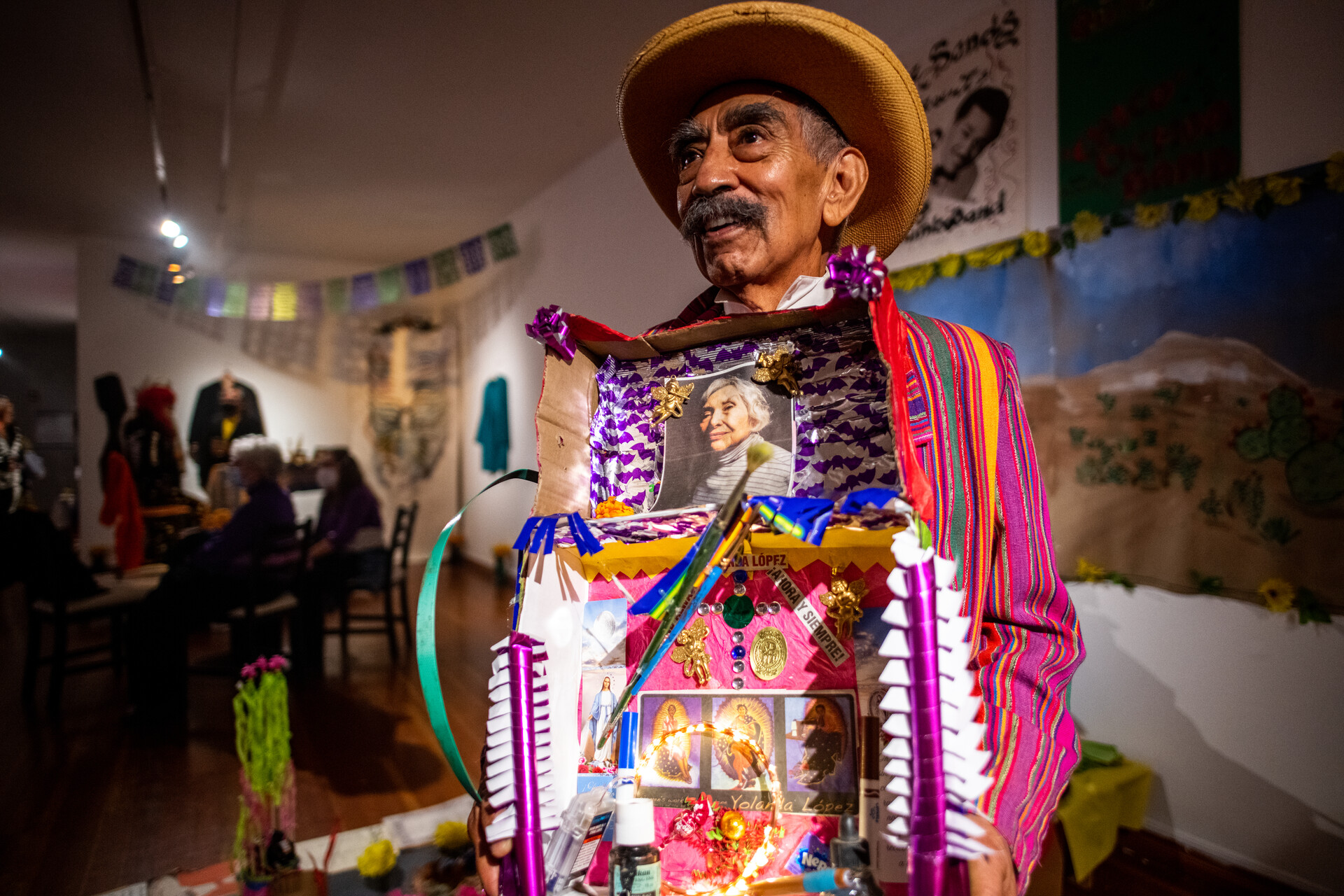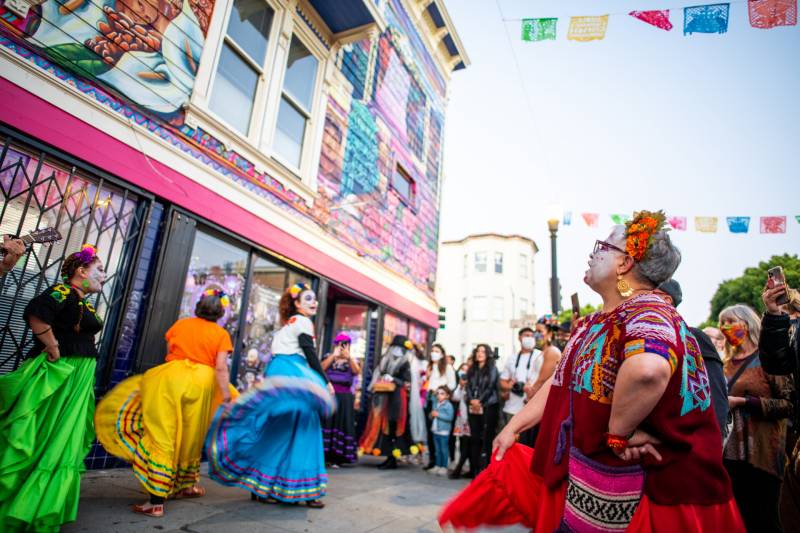Hundreds of residents filled the streets of the Mission District in San Francisco on Tuesday evening to honor and celebrate the dead on Día de los Muertos. The sidewalks of 24th Street, from Mission Street to Potrero Avenue, were packed with families, some holding candles, others wearing delicately crafted dresses, face paint and hair arrangements made out of cempasúchil, or marigolds.
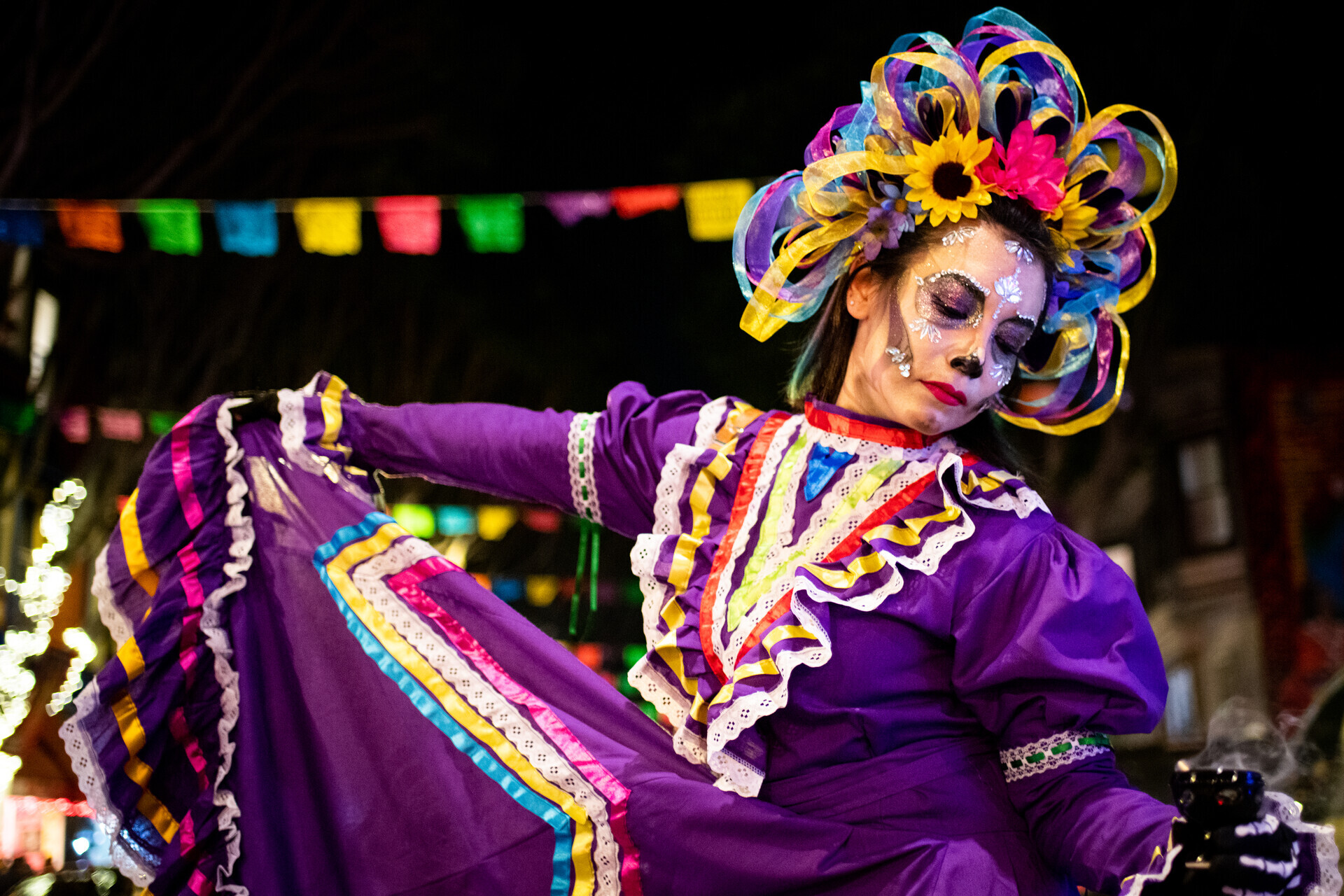
Photos and paintings of loved ones who had died were placed on tables or pinned on trees, surrounded by food, water, sage and cempasúchil.
On the corner of 24th and Capp streets, outside the Calle 24 Latino Cultural District building, a celebration honoring the lives of deceased womxn, queer and trans people of color, or QTPOC, and youth included dance performances by the the Mission-based Danza Azteca Mixcoatl Anahuac and readings by members of the Young Women’s Freedom Center.
(“Womxn” is an alternative spelling used to include those who feel excluded by the spellings “women” or “womyn,” particularly trans and nonbinary women.)
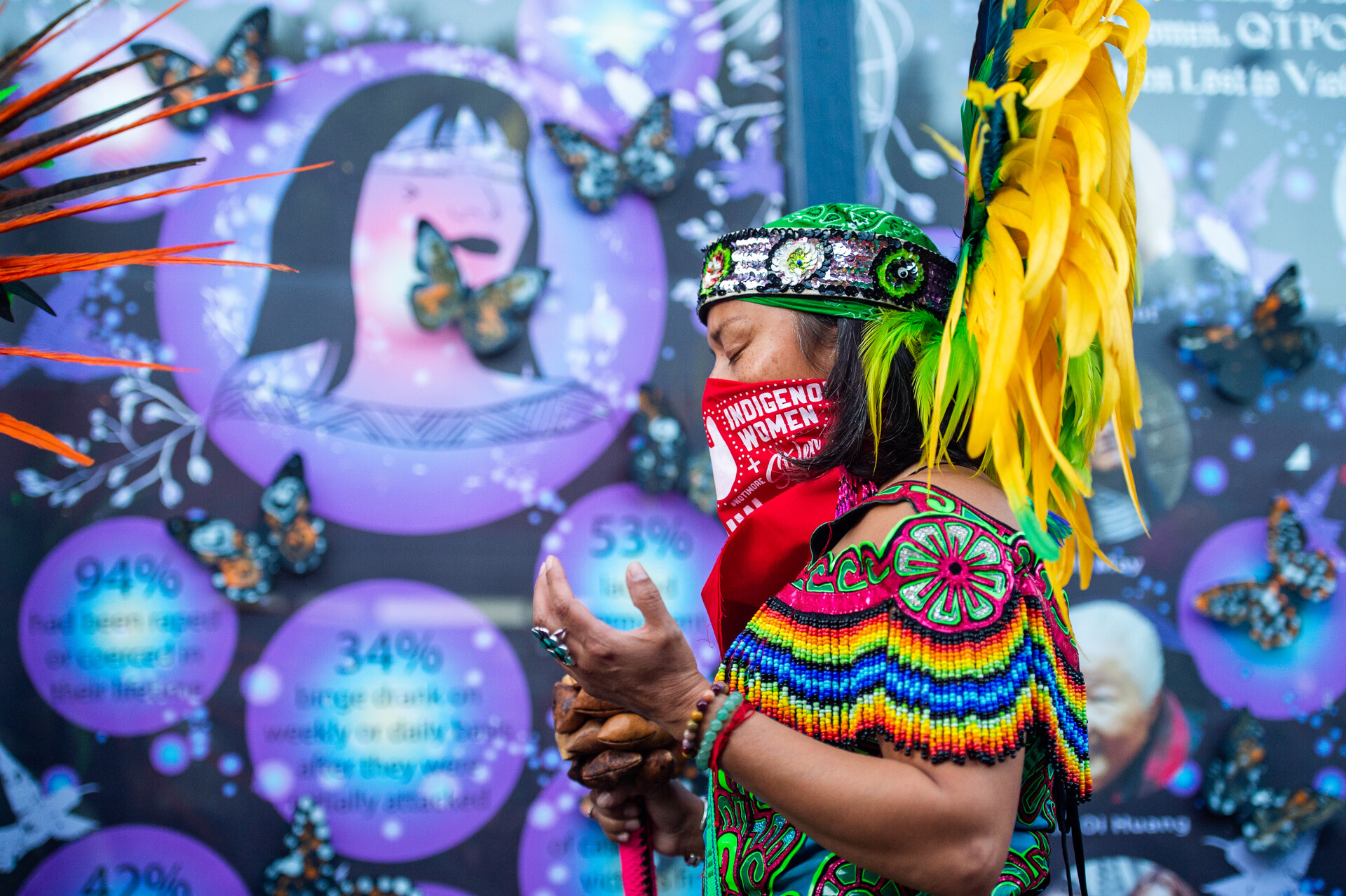
As has become tradition over the decades, musicians, artists and vendors gathered at intersections, parking lots and other available open space, transforming 24th Street into a living ofrenda — or place of offering — a powerful reminder that honoring the dead need not always be somber ritual, but also can be one of joy and creative expression.
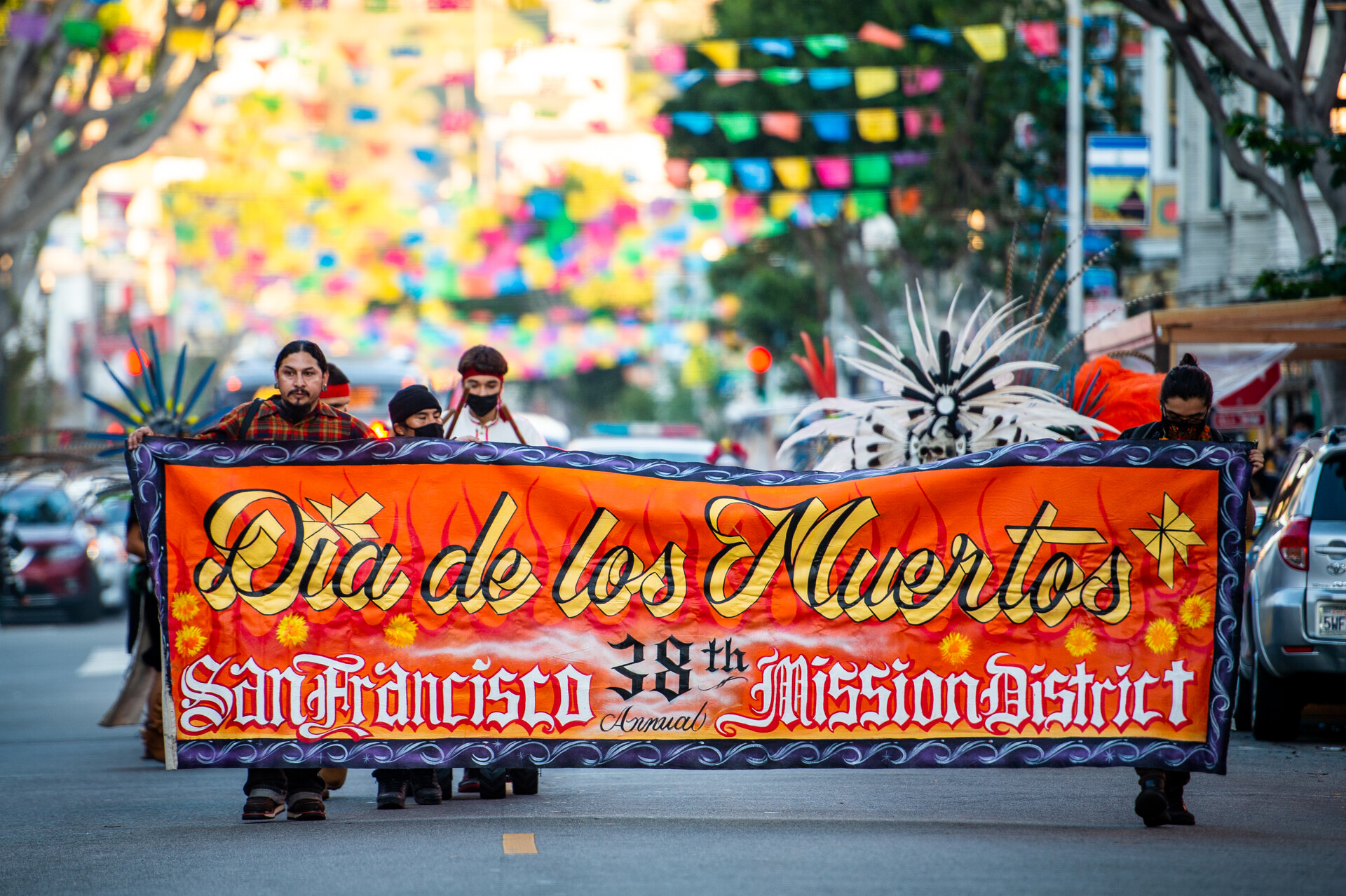
“Día de los Muertos is not just about celebrating the dead, but to also celebrate the living,” Jorge Molina, a bearer of Indigenous knowledge and self-described “journeyman,” said after performing a blessing at the new Mission Cultural Center for Latino Arts exhibit, “Ni Tanto Ni Tan Muertos, En Nuestra Memoria — Neither So Many, Nor So Dead, in Our Memories.”
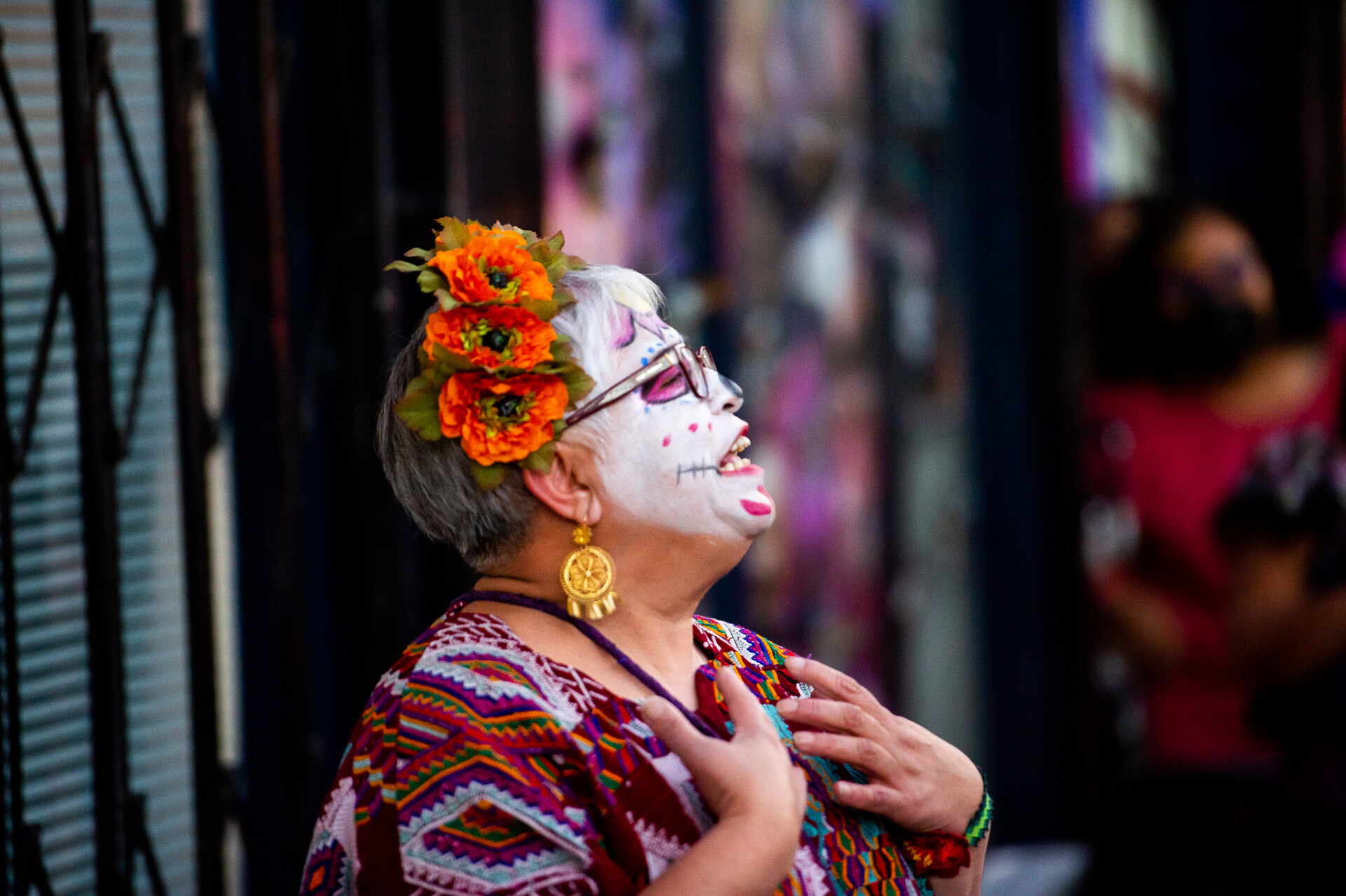
At the vigil organized by Calle 24, Berta Hernández, a community health worker and educator, performed a spoken-word piece as part of a larger tribute to Evelyn Hernández, a San Francisco resident whose body was found floating in the Bay in 2002. Her young son, Alex, is still missing, according to the San Francisco Police Department.
Hernández first met Evelyn when the latter was a student in a youth theater group at the Mission Recreation Center in the mid-1990s. Evelyn was then 14 and had recently migrated from El Salvador. Over the years, Berta and her family grew very close with Evelyn, and were deeply affected by her death.
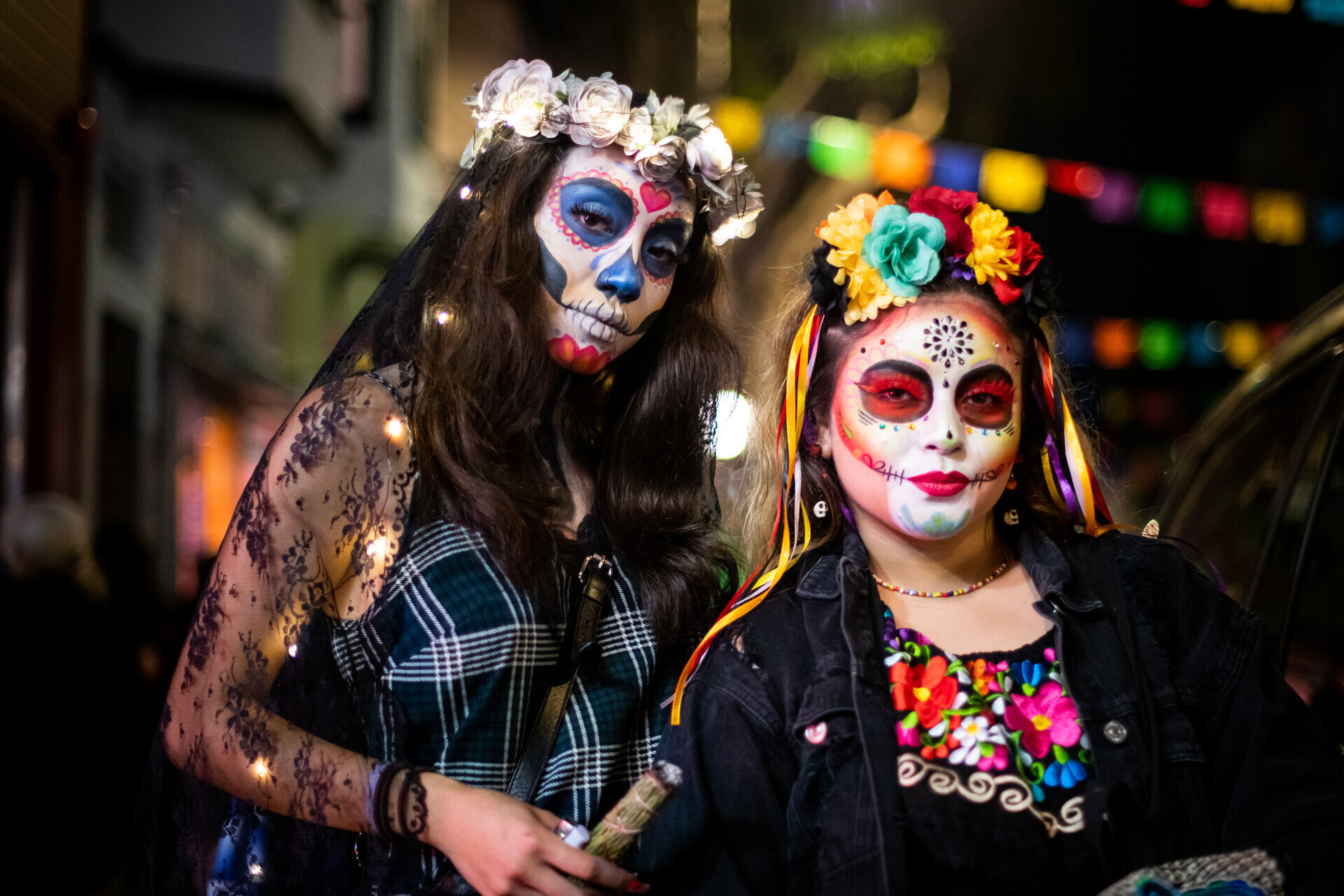
“That loss still hurts,” Hernández said in Spanish, noting that it has taken her 19 years to feel comfortable enough to “offer this small tribute.” She, along with others who knew Evelyn, performed a rendition of “Canción Sin Miedo,” an anthem that denounces gender-based violence and demands justice for femicides.
“Cantamos sin miedo, pedimos justicia. Gritamos por cada desaparecida. Que resuene fuerte ‘¡nos queremos vivas!’ Que caiga con fuerza el feminicida,” they sang. We sing without fear, we ask for justice. We yell for each woman that has dissappeared. Let it be heard that we want each of us alive and that there be an end to femicide.
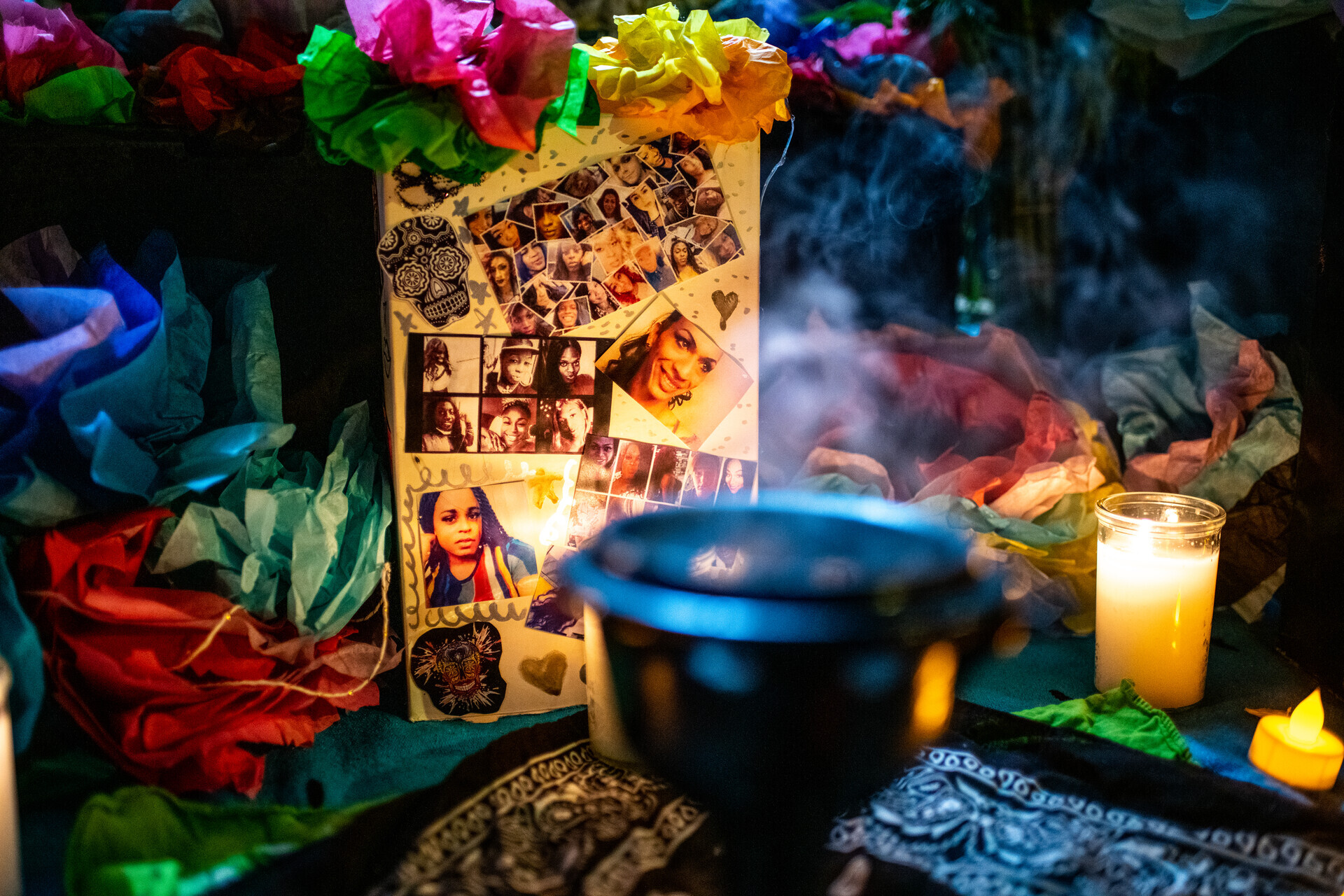
Hernández pointed to the increase in cases of gender-based violence in the U.S. and Latin America during the pandemic, especially against Indigenous and migrant women, as one of the key reasons Evelyn’s death is especially relevant now. The vigil also honored the lives of multiple other Bay Area women who were victims of violence.
“Dia de Muertos is about the dead, yes,” Hernández said. “But at the same time, it always is a denuncia social — an act of resistance.”
